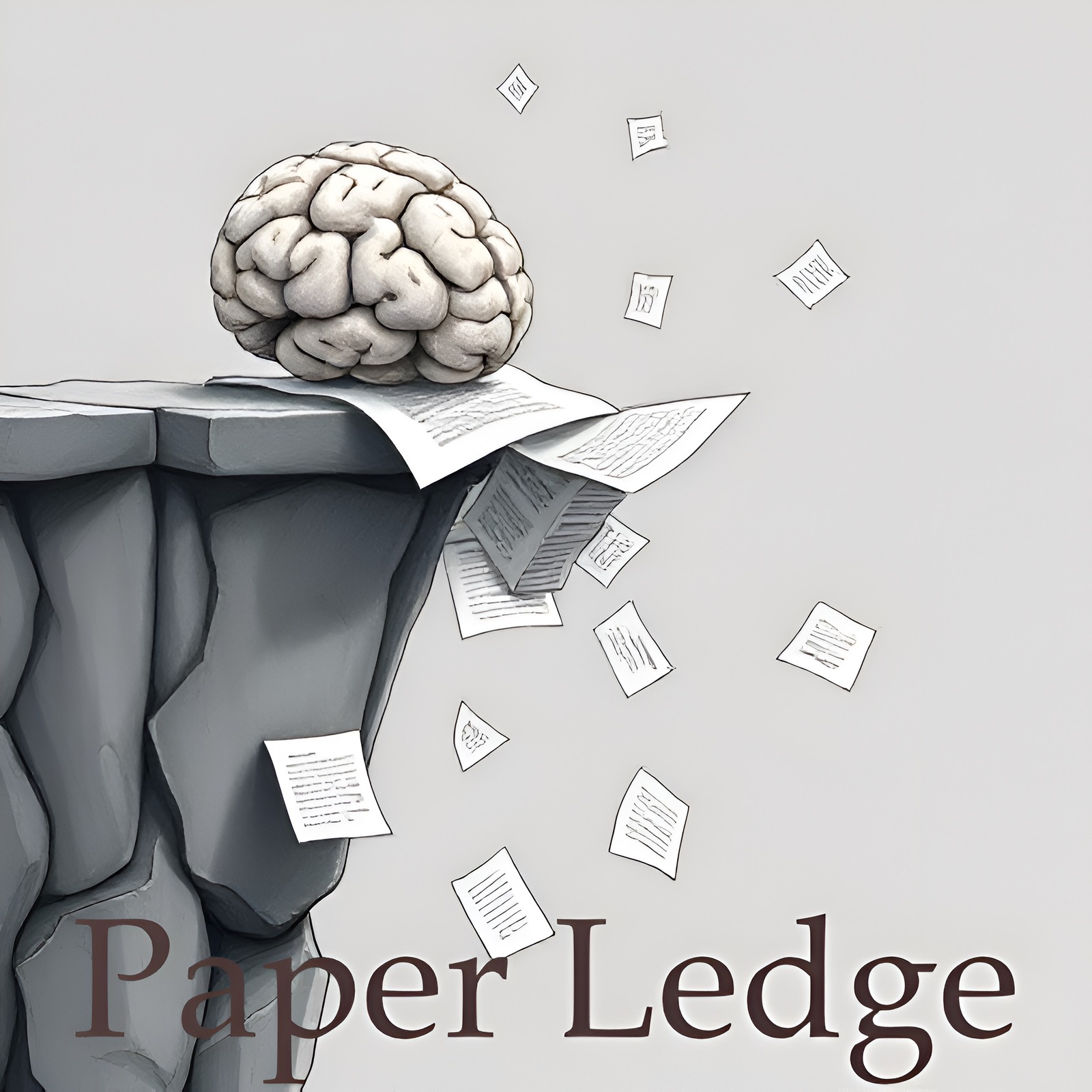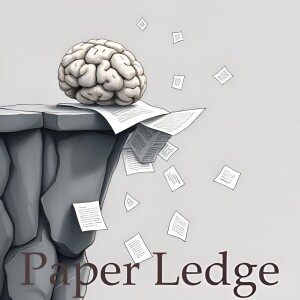PaperLedge

PaperLedge where research meets storytelling is a revolutionary podcast where cutting-edge research meets AI-powered storytelling. Hosted by the Ernis, whose blend of gentle reassurance, cosmic wonder, explanatory clarity, and enthusiastic charm makes complex research accessible to everyone. Each episode, Ernis transforms the latest academic papers into engaging, jargon-free audio experiences that deliver key insights in digestible formats. Whether you’re a researcher seeking interdisciplinary perspectives, a student supplementing your studies, or simply curious about scientific breakthroughs, PaperLedge has something for you.
Episodes
Episodes



Saturday Nov 01, 2025
Saturday Nov 01, 2025
Hey Learning Crew, Ernis here, ready to dive into some fascinating research! Today, we're looking at a paper that's tackling a big problem: prostate cancer detection. Imagine trying to find a tiny needle in a haystack – that's kind of what doctors face when looking for cancerous tumors using micro-ultrasound, or µUS.
Now, what if we could give them a super-powered magnet to help locate that needle? That's essentially what this research is trying to do. They're using something called a "medical foundation model" – think of it as a really, really smart computer program that's been trained on tons of medical data. It's like giving the computer a medical degree before it even starts!
This medical foundation model helps build high-performance diagnostic systems. The model they’ve created is called ProstNFound+, and it’s designed to detect prostate cancer from these µUS images.
But here's the thing: these models often need to be tweaked for specific tasks. So, the researchers didn't just use the standard model. They did some clever things to make it even better:
Adapter Tuning: They fine-tuned the model, kind of like adjusting the settings on a really sensitive camera to get the clearest picture possible.
Custom Prompt Encoder: They added a special ingredient – a way to feed in information about specific prostate cancer biomarkers. Think of it like giving the model a cheat sheet with clues about what to look for.
So, what does ProstNFound+ actually do? It generates two key outputs:
Cancer Heatmap: A visual representation that highlights areas of concern on the µUS image. Like a weather map showing areas of high heat, this heatmap shows areas where cancer is more likely to be present.
Risk Score: A numerical score that indicates the likelihood of clinically significant prostate cancer. This gives doctors a quick and easy way to assess the patient's risk level.
The really cool part is that they didn't just test this model on old data. They tested it on new data from a completely different clinic, collected five years later! This is a big deal because it shows that the model can generalize – meaning it can accurately detect cancer even when the images look slightly different than what it was trained on.
And guess what? ProstNFound+ performed just as well on the new data as it did on the old data! It also lined up pretty closely with existing clinical scoring systems that doctors use, like PRI-MUS and PI-RADS. This means it could potentially be a valuable tool for doctors in the real world.
To put it simply, this research shows that we can use these powerful AI models to help doctors find prostate cancer more accurately and efficiently. It's like giving them a superpower that can save lives.
"The results highlight its potential for clinical deployment, offering a scalable and interpretable alternative to expert-driven protocols."
So, why does this matter to you, the Learning Crew?
For Aspiring Medical Professionals: This shows the exciting potential of AI in healthcare and the impact you could have by developing and implementing these technologies.
For Anyone Concerned About Healthcare: This offers hope for earlier and more accurate diagnoses, which can lead to better treatment outcomes.
For Tech Enthusiasts: This is a great example of how advanced machine learning techniques can be applied to solve real-world problems.
Here are a few things I was pondering after reading this paper:
How might AI tools like ProstNFound+ change the role of doctors in the future? Will they become more like supervisors of AI systems?
Could this approach be adapted to detect other types of cancer or other diseases using different imaging techniques?
What are the ethical considerations we need to keep in mind as we increasingly rely on AI in healthcare, especially regarding data privacy and potential biases?
What do you think, Learning Crew? Let me know your thoughts and questions in the comments!Credit to Paper authors: Paul F. R. Wilson, Mohamed Harmanani, Minh Nguyen Nhat To, Amoon Jamzad, Tarek Elghareb, Zhuoxin Guo, Adam Kinnaird, Brian Wodlinger, Purang Abolmaesumi, Parvin Mousavi



Saturday Nov 01, 2025
Saturday Nov 01, 2025
Hey everyone, Ernis here, and welcome back to PaperLedge! Today, we're diving into a fascinating piece of research that gets to the heart of how AI learns our values – or doesn't! We're talking about Large Language Models, or LLMs, those powerful AI systems that are becoming increasingly woven into our daily lives.
Think about it: these models are answering our questions, writing our emails, even helping us make important decisions. That means they need to understand, and hopefully share, our values. The big question is: how do they learn what's right and wrong?
Now, a lot of previous research has focused on checking whether these LLMs already align with human values after they’ve been fully trained. But this paper takes a different, and in my opinion, much more insightful approach. It's like peeking behind the curtain to see how the magic actually happens. Instead of just seeing the finished product, the researchers are studying the entire training process, specifically the "post-training" phase, to understand how and when these values get baked in.
The research team essentially dissected the post-training process, looking at two key ingredients: the algorithms used to train the models and the data they’re trained on. They wanted to understand how each contributes to value alignment. Imagine it like teaching a child – are their values shaped more by the teaching method (the algorithm) or by the examples they see (the data)?
They experimented with some big-name models like Llama-3 and Qwen-3, models of different sizes. They put them through different post-training methods, including Supervised Fine-Tuning (SFT) and Preference Optimization (algorithms that help models learn what humans prefer), using popular datasets designed for these purposes.
Here’s the key takeaway: They found that the SFT phase, which is where models are directly shown examples of how to respond to prompts, has the biggest impact on establishing a model's values. Think of SFT as the foundational value programming. The surprising part? Subsequent Preference Optimization, which is meant to fine-tune the model based on human preferences, often doesn't significantly change those initial values. It's like trying to repaint a house without fixing the underlying structure.
"the SFT phase generally establishes a model's values, and subsequent preference optimization rarely re-aligns these values."
But the researchers didn’t stop there! They even created their own "synthetic" preference dataset, which allowed them to control and manipulate the values the models were learning. This is where things get really interesting. They discovered that even when the models were fed the same preference data, different Preference Optimization algorithms led to different value alignment outcomes! So, the how you teach is as important as what you teach.
Think of it like baking a cake. You can have the exact same recipe (the data), but if you use different baking methods (the algorithms) – maybe one oven is convection, the other isn't – you'll end up with slightly different cakes.
So, why does all of this matter?
For AI developers: This research provides actionable insights into how to curate data and choose algorithms to better align models with human values. It suggests that focusing on the SFT phase and carefully selecting the right preference optimization algorithm are crucial.
For policymakers: Understanding how values are learned during post-training can help inform regulations and guidelines for the development and deployment of AI systems.
For everyone else: As AI becomes more prevalent, it's essential to understand how these systems are being trained and what values they are learning. This research helps us to be more informed consumers and advocates for responsible AI development.
This research also raises some fascinating questions:
If SFT is so crucial for establishing values, how can we ensure that the data used in this phase is truly representative of diverse human values?
Given that different preference optimization algorithms can lead to different value alignments, even with the same data, how do we choose the "right" algorithm? Is there even a single "right" algorithm, or should we be tailoring them to specific contexts and values?
If preference optimization struggles to significantly re-align values established during SFT, does this suggest we need fundamentally new approaches to value alignment in LLMs?
That's all for this episode of PaperLedge. I hope this has shed some light on the complex world of AI value alignment. Until next time, keep learning and keep questioning!Credit to Paper authors: Mehar Bhatia, Shravan Nayak, Gaurav Kamath, Marius Mosbach, Karolina Stańczak, Vered Shwartz, Siva Reddy



Friday Oct 31, 2025
Friday Oct 31, 2025
Hey everyone, Ernis here, and welcome back to PaperLedge! Today, we're diving into a paper that's like giving a super-powered translator to a machine that's already pretty amazing. Think of it this way: we have these incredibly sensitive machines called mass spectrometers that can "smell" all the tiny molecules in a sample – like in your blood, or in a plant. The problem is, they give us this complex output, kind of like a fingerprint, but we often don't know what the fingerprint belongs to. It's like having a million fingerprints but only being able to identify a handful!
That’s where this research comes in. A team has created something called LSM-MS2, which is basically a super smart, deep-learning model – think of it as a super-powered AI brain. They trained it on millions of these molecular fingerprints, these mass spectrometry spectra, so it could learn the language of molecules. It's like teaching a kid to recognize different breeds of dogs, but instead of dogs, it's molecules!
What's really cool is that LSM-MS2 isn't just a good student; it's acing the class! The researchers found that it's 30% more accurate than previous methods at identifying tricky molecules that are almost identical – what scientists call isomers. Imagine trying to tell the difference between identical twins, but one has a tiny freckle you need to spot! This is huge because these isomers can have vastly different effects.
But it gets better! When they used LSM-MS2 to analyze complex biological samples, it identified 42% more compounds correctly than other methods. That's like finding 42 extra pieces of a puzzle that were previously missing. This means we can get a much more complete picture of what's going on in a biological system.
And even if the sample is really diluted, the machine works well. This is important, because sometimes we can't get a lot of sample from somebody.
Here's where it gets really exciting. LSM-MS2 doesn't just identify molecules; it creates what they call "spectral embeddings." Think of these as little summaries or tags that capture the essential information about each molecule. And these tags are so rich that the researchers could use them to tell the difference between healthy and diseased states, and even predict clinical outcomes! It’s like having a molecular crystal ball!
For example, imagine you're studying a new cancer treatment. You could use LSM-MS2 to analyze blood samples from patients before and after treatment and see how the molecular tags change. This could help you understand how the drug is working and predict which patients are most likely to respond.
So, why does this research matter? Well, for scientists, it's a game-changer for understanding complex biological systems and developing new treatments for diseases. For doctors, it could lead to more accurate diagnoses and personalized medicine. And for all of us, it's a step towards a deeper understanding of the molecular world around us.
Here are a couple of things I was thinking about while reading this paper:
How can we ensure that these AI models are trained on diverse enough datasets to avoid biases in their predictions? Could this tool lead to disparities in healthcare if not used carefully?
What are the ethical considerations of using AI to predict clinical outcomes? Where do we draw the line between helpful prediction and potentially harmful profiling?
Alright, that's all for today's episode. I hope you found this dive into LSM-MS2 as fascinating as I did. Until next time, keep exploring!Credit to Paper authors: Gabriel Asher, Devesh Shah, Amy A. Caudy, Luke Ferro, Lea Amar, Ana S. H. Costa, Thomas Patton, Niall O'Connor, Jennifer M. Campbell, Jack Geremia



Friday Oct 31, 2025
Artificial Intelligence - LLMs Process Lists With General Filter Heads
Friday Oct 31, 2025
Friday Oct 31, 2025
Hey Learning Crew, Ernis here, ready to dive into another fascinating paper! Today, we're cracking open the black box of Large Language Models, or LLMs, to see how they handle a surprisingly common task: filtering lists.
Think about it: you're scrolling through Netflix, filtering for comedies released after 2020. Or maybe you're sifting through emails, looking only for messages from your boss. We filter information all the time. This paper asks: how do LLMs, these complex AI systems, do the same thing?
What the researchers discovered is pretty mind-blowing. They found that LLMs aren't just memorizing specific lists and answers. Instead, they've learned a general method for filtering, kind of like a built-in "filter" function you'd find in computer programming.
Now, here's where it gets interesting. To understand how this filtering happens, the researchers used something called "causal mediation analysis". Don't worry about the jargon! Just think of it as a way of tracing the flow of information inside the LLM, like following the wires in a circuit board.
They discovered that a small number of "attention heads" – specific parts of the LLM's architecture – act as filter heads. These heads, at certain points in processing the list, seem to be encoding a compact representation of what to filter for. Imagine them holding a little checklist: "Must be a comedy," "Must be from my boss."
"These filter heads encode a compact representation of the filtering predicate."
What's really cool is that this "checklist" is general and portable. The LLM can take that filtering rule and apply it to different lists, even if they're presented in different formats, in different languages, or in different tasks. It's like having a universal remote control for filtering!
But, and there's always a "but," the researchers also found that LLMs can sometimes use a different strategy. Instead of creating a general checklist, they might eagerly evaluate each item on the list, marking it as "keep" or "discard" right away. It's like a quick, item-by-item judgment.
Think of it like this: are you creating a mental rule before filtering, or are you just making a bunch of snap judgements? Both approaches work but have different pros and cons.
This raises some fascinating questions. Does the strategy depend on the kind of list? Does it depend on the complexity of the filtering rule? If LLMs are thinking in human interpretable way, can we use that to make them even better?
So, why does this research matter? Well, for AI researchers, it gives us a peek into how these complex models actually work, moving beyond just "black box" predictions.
For developers, it could lead to more efficient and reliable LLMs, especially when dealing with large datasets.
And for everyone else, it's a reminder that even seemingly simple tasks like filtering involve sophisticated computational strategies.
This research suggests that LLMs can develop human-interpretable implementations of abstract computational operations. This means we can understand how it works, and therefore, can find ways to improve it!
So, what do you think, Learning Crew? Does this change how you think about AI? And how might understanding these filtering mechanisms help us build even smarter and more useful AI systems?Credit to Paper authors: Arnab Sen Sharma, Giordano Rogers, Natalie Shapira, David Bau



Friday Oct 31, 2025
Friday Oct 31, 2025
Hey PaperLedge crew, Ernis here, ready to dive into some fascinating research! Today, we're exploring whether those super-smart Transformer models – think the brains behind a lot of AI magic – can actually learn how random numbers are generated. Now, you might be thinking, "Random is random, right?" Well, not exactly!
We're talking about pseudo-random number generators, or PRNGs. These are little algorithms that computers use to create sequences of numbers that look random, but are actually based on a specific formula. Think of it like a magician's trick - it looks like magic, but there's a method behind it.
This particular paper focuses on something called Permuted Congruential Generators, or PCGs. Now, that sounds like a mouthful, but essentially, PCGs are like souped-up versions of older PRNGs. They take a simple formula and then add a bunch of extra steps – shuffling bits around, flipping them, and chopping off pieces – to make the sequence even harder to predict. The goal is to prevent people from guessing the next number in the sequence.
It's like trying to guess what a cake is made of after it's been baked, frosted and decorated!
So, what did the researchers do? They basically threw these PCG-generated sequences at Transformer models to see if they could figure out the pattern. And guess what? The Transformers were surprisingly good at it! Even when the sequences were super long and complex, the model could predict the next number with impressive accuracy.
The researchers even made things tougher by truncating the output to just a single bit! Imagine trying to predict the weather based on whether a coin flip lands on heads or tails. It's tough, but the Transformers could still do it!
It's like the transformer is learning to see the underlying code of reality from a very limited perspective.
One of the coolest findings was that the researchers discovered the model could learn multiple types of PRNGs at the same time. It's like teaching a child to speak both English and Spanish. The kid can learn both languages, finding the similarities and differences between them. Similarly, the Transformer could identify the patterns in different PCGs and use them to predict the next numbers.
The researchers also found a relationship between the size of the numbers the PCG was generating (the modulus) and how much data the Transformer needed to learn the pattern. It turns out the amount of data needed grows with the square root of the modulus. It is like saying the amount of effort to crack a safe increases with the square root of its size.
But here's the kicker: when the numbers got really big, the Transformers struggled. They needed a little help in the form of something called curriculum learning. Think of it like teaching someone to run a marathon. You don't just throw them into the race; you start with shorter distances and gradually increase the mileage. The researchers found that training the Transformers on smaller numbers first helped them learn the patterns for larger numbers.
Finally, the researchers took a peek inside the Transformer's "brain" – specifically, the embedding layers. And they found something really interesting: the model was spontaneously grouping the numbers into clusters based on how their bits were arranged. This suggests that the Transformer was learning a deeper understanding of the underlying structure of the numbers, which allowed it to transfer its knowledge from smaller numbers to larger numbers.
It's like if you are trying to learn the alphabet, you might start by grouping letters based on how they look (straight lines vs. curved lines). The Transformer was doing something similar with the bits in the numbers.
So, why does all this matter? Well, a few reasons:
For AI researchers: It helps us understand how these powerful Transformer models learn and generalize.
For cybersecurity folks: It highlights potential vulnerabilities in the random number generators we use to secure our systems. If an AI can crack the code, so could a hacker!
For anyone curious about the nature of randomness: It shows that even things that seem random might have underlying patterns that can be learned.
This research raises some really interesting questions. For example:
Could we use this knowledge to design even better random number generators that are harder for AI to crack?
Could we use these same techniques to learn other types of complex patterns in data?
What are the broader implications of AI being able to find order in what we perceive as randomness?
Food for thought, right PaperLedge crew? Until next time, keep learning and stay curious!Credit to Paper authors: Tao Tao, Maissam Barkeshli



Friday Oct 31, 2025
Computer Vision - ChartAB A Benchmark for Chart Grounding & Dense Alignment
Friday Oct 31, 2025
Friday Oct 31, 2025
Hey PaperLedge learning crew, Ernis here, ready to dive into something visually stimulating! Today, we're talking about charts - those graphs, pies, and bars we see everywhere, from news articles to business presentations. They're supposed to make complex data easy to understand, right?
Well, it turns out that even though computers are getting smarter all the time, they're still not perfect at "reading" charts the way we humans do. Think of it like this: you can glance at a bar graph and instantly see which bar is tallest, meaning that category is the biggest. But for a computer, it's not always that simple.
That's where this new research comes in. A group of clever folks created something called the "ChartAlign Benchmark," or ChartAB for short. It's basically a really tough test for those fancy AI models – the ones that can "see" and "understand" images and text. We're talking about Vision-Language Models, or VLMs.
The researchers wanted to see how well these VLMs could do things like:
Extract the actual numbers behind the chart (like, what's the exact value of that bar?).
Pinpoint specific parts of the chart, like a particular slice of a pie chart.
Recognize what those parts mean – is it a percentage? A dollar amount?
Think of it like teaching a robot to read a map. It needs to know where the roads are, what the symbols mean, and how they all relate to each other.
Now, what makes ChartAB really interesting is that it also tests if these VLMs can compare two charts side-by-side. Can they tell which chart shows a bigger increase over time? Can they spot the different trends? This is super important because we often use charts to compare things and draw conclusions!
To do this comparison, the researchers designed a special JSON template. Imagine it like a fill-in-the-blanks document that helps the computer organize the information it pulls from the charts, making it easier to compare apples to apples, or in this case, bars to bars.
The results? Well, they weren't perfect. The researchers found that even the best VLMs have some "perception biases" and "weaknesses" when it comes to charts. Sometimes they struggle with details, or they get confused by certain chart types. The study also revealed something called "hallucinations." That's when the AI confidently says something that simply isn't true – kind of like making stuff up about the chart!
"Our analysis of evaluations on several recent VLMs reveals new insights into their perception biases, weaknesses, robustness, and hallucinations in chart understanding."
So, why does this matter? Think about it:
For researchers: This benchmark helps them build better AI models that can accurately understand and interpret visual data.
For businesses: Imagine AI that can automatically analyze market trends from dozens of charts and graphs, giving you a competitive edge!
For everyone: More accurate chart reading by AI can lead to better data visualization in news reports, scientific publications, and more, helping us all make more informed decisions.
This research highlights the fact that there's still work to be done in making AI truly "chart-smart." It's a reminder that even the most advanced technology isn't always perfect, and that's why it's crucial to keep testing and improving.
Here are some things I'm pondering:
Could these "hallucinations" in chart understanding lead to misinformation if AI is used to automatically generate reports?
How can we design charts to be more "AI-friendly" without sacrificing their clarity for human readers?
Beyond business and research, what other fields could benefit from improved AI chart reading capabilities?
That's the lowdown on this fascinating paper! Let me know your thoughts, learning crew. Until next time, keep exploring the knowledge landscape!Credit to Paper authors: Aniruddh Bansal, Davit Soselia, Dang Nguyen, Tianyi Zhou



Friday Oct 31, 2025
Computer Vision - Masked Diffusion Captioning for Visual Feature Learning
Friday Oct 31, 2025
Friday Oct 31, 2025
Hey PaperLedge crew, Ernis here, ready to dive into some fascinating research! Today, we're unpacking a paper about how computers learn to "see" like we do, and it involves something called "masked diffusion captioning" – which, I know, sounds like something straight out of a sci-fi movie, but trust me, it's pretty cool.
Think about how you learn to describe a picture. Someone shows you a photo of a cat sleeping on a couch, and you might say, "A fluffy cat napping peacefully on a comfortable couch." Now, imagine teaching a computer to do that. The researchers behind this paper have come up with a clever way to train computers to connect images and words.
The core idea is this: they use something called a "masked diffusion language model." Sounds complicated, right? Let's break it down. Imagine you have a sentence describing an image, like our cat-on-couch example. Now, randomly erase some of the words – that's the "masking" part. The computer's job is to fill in the blanks, using the image as its guide. This "filling in the blanks" process is done through "diffusion," which basically means the computer starts with total noise and slowly refines it into the correct words.
"It's like giving the computer a jigsaw puzzle where some of the pieces are missing and saying, 'Here's the picture on the box; can you put it back together?'"
So, why is this different from how computers usually learn to describe images? Well, most methods teach computers to generate descriptions word-by-word, in a specific order. This new approach, called MDC (Masked Diffusion Captioning), treats all the words equally. It doesn't matter if the word is at the beginning, middle, or end of the sentence; the computer has to figure it out based on the image. This gives the computer a more holistic understanding of the picture.
Think of it like this: Imagine teaching someone to paint by telling them to only focus on one tiny section at a time. They might create a technically perfect section, but it might not fit with the overall picture. MDC is more like teaching someone to see the whole scene and then paint it in a way that all the parts work together.
Now, here's why this matters. These researchers found that this MDC approach actually teaches the computer to "see" pretty well. They tested it on various tasks, and the computer's ability to understand images was comparable to, or even better than, other methods. This means that MDC can improve how computers identify objects, understand scenes, and ultimately, interact with the visual world.
For AI researchers: This offers a new pathway for visual representation learning, potentially leading to more robust and generalizable AI models.
For developers: It could improve the accuracy of image recognition software, making applications like image search and content moderation more effective.
For everyday users: Imagine smarter AI assistants that can better understand your photos and videos, or self-driving cars that are even more reliable at interpreting their surroundings.
The implications are huge! It's about making computers better at understanding the world around us, and that can have a positive impact on many aspects of our lives.
So, what are the big questions that come to mind after reading this paper? Here are a couple that I think are worth pondering:
Could MDC be combined with other learning techniques to create even more powerful visual AI systems?
How can we ensure that these AI systems are used ethically and responsibly, especially when it comes to tasks like facial recognition and surveillance?
Let me know what you think! I'm always eager to hear your thoughts and perspectives on these fascinating topics. Until next time, keep learning and keep exploring!Credit to Paper authors: Chao Feng, Zihao Wei, Andrew Owens



Friday Oct 31, 2025
Friday Oct 31, 2025
Alright learning crew, Ernis here, ready to dive into another fascinating paper that's got me buzzing! Today, we're talking about video generation – not just creating cool visuals, but understanding how well these AI video models actually understand the world they're depicting.
Think about those amazing AI-generated videos you've probably seen. They're getting incredibly realistic, right? But are they just fancy image generators, or do they actually get things like physics, cause and effect, and spatial relationships? That's the big question this paper tackles.
The researchers focused on one of the top video models out there, called Veo-3, and put it through its paces. They wanted to see if it could reason about what's happening in the videos it creates, without any specific training for reasoning tasks. This is what we call "zero-shot reasoning." Imagine showing a child a simple magic trick, and they can instantly guess how it works. That’s the kind of intuitive understanding we are looking for in these AI models.
Now, to really put Veo-3 to the test, the researchers created a special evaluation dataset called MME-CoF (Chain-of-Frame). Think of it as a carefully designed obstacle course for video AI. This benchmark tests 12 different types of reasoning, including:
Spatial Reasoning: Can the model understand where things are in relation to each other?
Geometric Reasoning: Does it grasp shapes, sizes, and angles?
Physical Reasoning: Does it know how objects interact – will a ball roll down a hill?
Temporal Reasoning: Can it understand the order of events and cause and effect over time?
Embodied Logic: Does it get how an agent (like a person) can interact with the environment?
So, what did they find? Well, the results are mixed, which is often the most interesting kind of research!
On the one hand, Veo-3 showed promise in areas like short-horizon spatial coherence (making sure things stay consistent in a short clip), fine-grained grounding (linking specific words to what's happening in the video), and locally consistent dynamics (making sure things move realistically in small sections of the video).
However, it struggled with things like long-horizon causal reasoning (understanding cause and effect over a longer period), strict geometric constraints (following precise geometric rules), and abstract logic (more complex, abstract reasoning).
“Overall, they are not yet reliable as standalone zero-shot reasoners, but exhibit encouraging signs as complementary visual engines alongside dedicated reasoning models.”
In other words, Veo-3 isn't quite ready to replace Sherlock Holmes, but it could be a valuable assistant, helping us analyze and understand complex visual information.
Why does this matter?
For AI Researchers: This research provides a clear roadmap for improving video models and incorporating better reasoning capabilities.
For Content Creators: Understanding the limitations of these models can help you use them more effectively and avoid potential pitfalls.
For Everyone: As AI becomes more integrated into our lives, it's crucial to understand its strengths and weaknesses, especially when it comes to understanding the world around us.
Ultimately, this research highlights that while AI video generation has come a long way, there's still work to be done before these models can truly understand and reason about the videos they create.
Now, here are a couple of thoughts that jumped into my head while reading this:
Given these current limitations, what kind of "guardrails" need to be in place to ensure these models aren't used to spread misinformation or create deceptive content?
If we can combine these video models with other AI systems specializing in reasoning, what kind of new applications might become possible? Could we create AI tutors that can explain complex concepts using visual examples?
Let me know what you think, learning crew! This is just the beginning of a fascinating conversation about the future of AI and its ability to understand the world through video.
And, of course, if you want to dive deeper, you can check out the project page here: https://video-cof.github.ioCredit to Paper authors: Ziyu Guo, Xinyan Chen, Renrui Zhang, Ruichuan An, Yu Qi, Dongzhi Jiang, Xiangtai Li, Manyuan Zhang, Hongsheng Li, Pheng-Ann Heng







